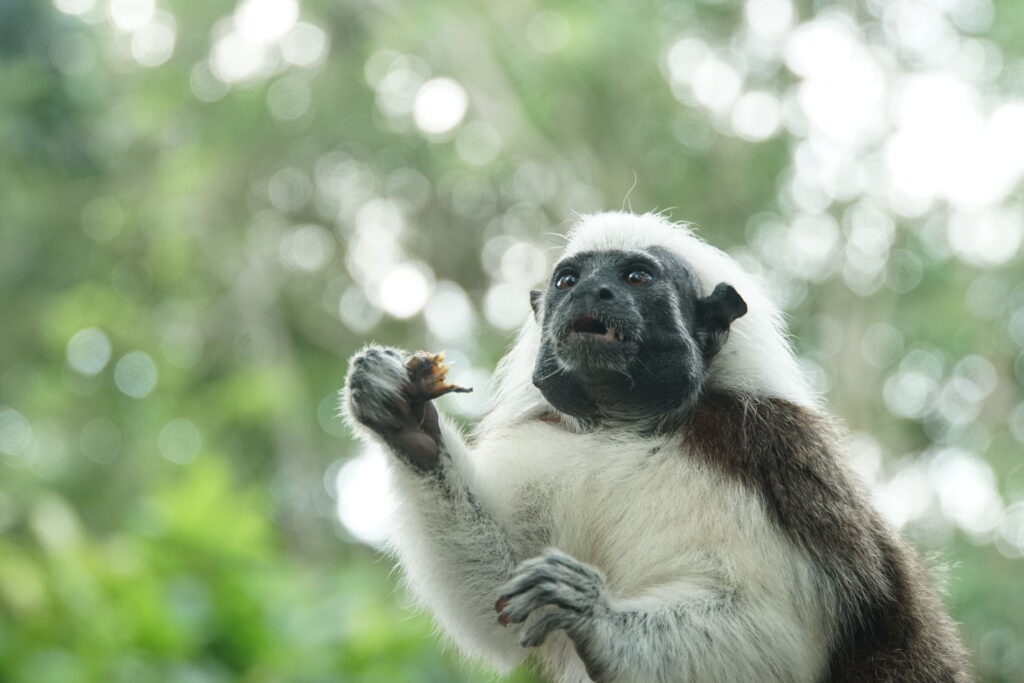The cotton-top tamarin is a small primate between 30 and 40 cm. Normally their tail, which they use for balance while traveling and jumping in the treetops, is much longer. Furthermore, they have small claws on their fingers, one of the characteristics of their family Callitrichidae.
Diet
Their diet typically consists of fruit and insects but changes slightly during the year. During the wet season they largely feed on fruits due to their high availability, whereas they consume more insects and tree sap in the dry season. Due to their small stomach size and their energetic and active lifestyle they are forced to eat only the most high-quality food sources.
Like almost every other primate in this world they are vital for their ecosystem, the tropical dry forest. By ingesting seeds and expelling them they are a great seed disperser in their home range.

Behavior and groups
The cotton-top tamarin lives in groups from 3 to 9 individuals but bigger groups have been observed. There is a leading monogamous couple which is also the only one that is allowed to breed within their group. Each year in the early rainy season the female gives birth to two babies that are no more than 10 cm tall. The dominant female uses pheromones to suppress sexual behavior and even delay puberty in younger individuals. These tamarins also engage in cooperative breeding. Juveniles and inferior adults care for the offspring of the dominant pair. The babies are carried on the back of the older individuals which might be their older siblings. While caring for the offspring, the ones who carry the babies more often lose a lot of weight since the newborns weigh around 20% of their own body weight.
Individuals have also been observed sharing and giving food with others, even the ones who are not related to them. This extraordinary behavior is unusual in animals.
These tamarins are also exceptionally vigilant animals. Due to their size, they are always looking out for potential predators. While resting one of the individuals is always on the lookout, patrolling the outskirts of their territory. They immediately alert the group if any threat occurs.
Their chirps or whistle-like calls are highly sophisticated, following grammatical rules and structures. Researchers have been able to distinguish between almost 40 different calls, each representing their own meaning. They may be able to communicate about food sites, intentions, curiosity and even feelings, like joy or fear.
Critically endangered primate
Cotton-top tamarins are listed as Critically endangered by the IUCN red list of endangered species, estimating the number of mature adult animals in den wild at only 2000.
Many were captured and are held in zoos or animal parks, but they are also frequently used for experiments. They are also illegally traded as pets.
Curiosity with humans
Cotton-top tamarins are naturally very curious animals, approaching everything that seems out of the ordinary and inspecting closely. Unfortunately, this is also one of their weak points since it often leads to their capture by humans.
